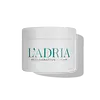What's inside
What's inside
 Key Ingredients
Key Ingredients

No key ingredients
 Benefits
Benefits

 Concerns
Concerns

 Ingredients Side-by-side
Ingredients Side-by-side

Water
Skin ConditioningGlycerin
HumectantDimethicone
EmollientRhamnose
HumectantIsohexadecane
EmollientAlcohol Denat.
AntimicrobialPropanediol
SolventIsopropyl Isostearate
EmollientVinyl Dimethicone/Methicone Silsesquioxane Crosspolymer
Cetyl Alcohol
EmollientDimethicone/Vinyl Dimethicone Crosspolymer
Skin ConditioningBehenyl Alcohol
EmollientNylon-12
PEG-100 Stearate
CI 77163
Cosmetic ColorantCI 77891
Cosmetic ColorantStearic Acid
CleansingStearyl Alcohol
EmollientArachidyl Alcohol
EmollientCetearyl Alcohol
EmollientCetearyl Glucoside
EmulsifyingCaffeine
Skin ConditioningNeohesperidin Dihydrochalcone
MaskingPalmitic Acid
EmollientPhenoxyethanol
PreservativeAdenosine
Skin ConditioningAmmonium Polyacryloyldimethyl Taurate
Emulsion StabilisingDisodium Stearoyl Glutamate
CleansingDisodium EDTA
Caprylyl Glycol
EmollientCitric Acid
BufferingSynthetic Fluorphlogopite
Acrylamide/Sodium Acryloyldimethyltaurate Copolymer
Emulsion StabilisingEthylhexyl Hydroxystearate
EmollientPolysorbate 80
EmulsifyingParfum
MaskingWater, Glycerin, Dimethicone, Rhamnose, Isohexadecane, Alcohol Denat., Propanediol, Isopropyl Isostearate, Vinyl Dimethicone/Methicone Silsesquioxane Crosspolymer, Cetyl Alcohol, Dimethicone/Vinyl Dimethicone Crosspolymer, Behenyl Alcohol, Nylon-12, PEG-100 Stearate, CI 77163, CI 77891, Stearic Acid, Stearyl Alcohol, Arachidyl Alcohol, Cetearyl Alcohol, Cetearyl Glucoside, Caffeine, Neohesperidin Dihydrochalcone, Palmitic Acid, Phenoxyethanol, Adenosine, Ammonium Polyacryloyldimethyl Taurate, Disodium Stearoyl Glutamate, Disodium EDTA, Caprylyl Glycol, Citric Acid, Synthetic Fluorphlogopite, Acrylamide/Sodium Acryloyldimethyltaurate Copolymer, Ethylhexyl Hydroxystearate, Polysorbate 80, Parfum
Water
Skin ConditioningButyrospermum Parkii Butter
Skin ConditioningCaprylic/Capric/Succinic Triglyceride
EmollientPentylene Glycol
Skin ConditioningBetaine
HumectantCoco-Caprylate
EmollientCaprylic/Capric Triglyceride
MaskingGlyceryl Stearate Citrate
EmollientUndecane
EmollientDipalmitoyl Hydroxyproline
Skin ConditioningAlgae Extract
EmollientArachidyl Alcohol
EmollientSoluble Collagen
HumectantGlyceryl Stearate
EmollientTridecane
PerfumingBehenyl Alcohol
EmollientTocopheryl Acetate
AntioxidantArachidyl Glucoside
EmulsifyingCarnosine
Skin ConditioningTocopherol
AntioxidantXanthan Gum
EmulsifyingAdenosine
Skin ConditioningAllantoin
Skin ConditioningSodium Hyaluronate
HumectantSodium Phytate
Citric Acid
BufferingSodium Benzoate
MaskingPotassium Sorbate
PreservativeWater, Butyrospermum Parkii Butter, Caprylic/Capric/Succinic Triglyceride, Pentylene Glycol, Betaine, Coco-Caprylate, Caprylic/Capric Triglyceride, Glyceryl Stearate Citrate, Undecane, Dipalmitoyl Hydroxyproline, Algae Extract, Arachidyl Alcohol, Soluble Collagen, Glyceryl Stearate, Tridecane, Behenyl Alcohol, Tocopheryl Acetate, Arachidyl Glucoside, Carnosine, Tocopherol, Xanthan Gum, Adenosine, Allantoin, Sodium Hyaluronate, Sodium Phytate, Citric Acid, Sodium Benzoate, Potassium Sorbate
 Reviews
Reviews

Ingredients Explained
These ingredients are found in both products.
Ingredients higher up in an ingredient list are typically present in a larger amount.
Adenosine is in every living organism. It is one of four components in nucleic acids that helps store our DNA.
Adenosine has many benefits when used. These benefits include hydrating the skin, smoothing skin, and reducing wrinkles. Once applied, adenosine increases collagen production. It also helps with improving firmness and tissue repair.
Studies have found adenosine may also help with wound healing.
In skincare products, Adenosine is usually derived from yeast.
Learn more about AdenosineArachidyl Alcohol is a fatty alcohol made from peanut oil. It is an emollient, emulsifier, and thickener.
You'll most likely find this ingredient as an emulsifier in water-based cosmetics.
Behenyl Alcohol is a type of fatty alcohol (these are different from the drying, solvent alcohols).
Fatty Alcohols have hydrating properties and are most often used as an emollient or to thicken a product. They are usually derived from natural fats and oils; behenyl alcohol is derived from the fats of vegetable oils.
Emollients help keep your skin soft and hydrated by creating a film that traps moisture in.
In 2000, Behenyl Alcohol was approved by the US as medicine to reduce the duration of cold sores.
Learn more about Behenyl AlcoholCitric Acid is an alpha hydroxy acid (AHA) naturally found in citrus fruits like oranges, lemons, and limes.
Like other AHAs, citric acid can exfoliate skin by breaking down the bonds that hold dead skin cells together. This helps reveal smoother and brighter skin underneath.
However, this exfoliating effect only happens at high concentrations (20%) which can be hard to find in cosmetic products.
Due to this, citric acid is usually included in small amounts as a pH adjuster. This helps keep products slightly more acidic and compatible with skin's natural pH.
In skincare formulas, citric acid can:
While it can provide some skin benefits, research shows lactic acid and glycolic acid are generally more effective and less irritating exfoliants.
Most citric acid used in skincare today is made by fermenting sugars (usually from molasses). This synthetic version is identical to the natural citrus form but easier to stabilize and use in formulations.
Read more about some other popular AHA's here:
Learn more about Citric AcidWater. It's the most common cosmetic ingredient of all. You'll usually see it at the top of ingredient lists, meaning that it makes up the largest part of the product.
So why is it so popular? Water most often acts as a solvent - this means that it helps dissolve other ingredients into the formulation.
You'll also recognize water as that liquid we all need to stay alive. If you see this, drink a glass of water. Stay hydrated!
Learn more about Water